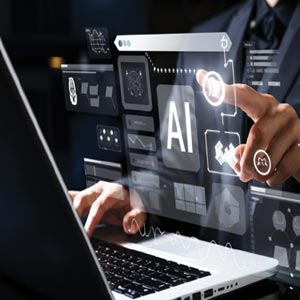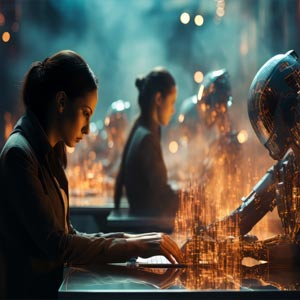THANK YOU FOR SUBSCRIBING

The CIO Imperative: Connect and Collaborate to Drive the Future of Automotive
John Whinham, VP & GM-Automotive, HP Enterprise Services


John Whinham, VP & GM-Automotive, HP Enterprise Services
Today’s automotive sector is being redefined by next-gen buyer expectations, increasingly digitized product lines, and evolved business models. In response, savvy CIOs are leveraging technology to better connect andintegrate their products and businesses, and to collaborate across more complex and globalized value chains.
Shifting Tastes It all starts with the customer. Millennials and other techsavvy buyers want bold designs and cool new features. In-car navigation and connectivity are givens, but today’s consumers also demand vehicles that are personalized to fit their particular lifestyle, and will reward brands that deliver both variety and value. And they expect not just different products, but a radically different consumer experience. Particularly in mature markets, younger consumers tend to buy fewer cars less frequently, and in markets everywhere buyers are more demanding and less brand loyal. So it is vital that dealers and manufacturers forge and maintain closer elationships with their customers. For automotive executives, and especially for CIOs, that requires a whole new approach to sales and service. It means more than shifting from brochures to streaming video. Connected selling is a 24/7 challenge. It requires looking beyond brick-and-mortar to the anywhere, anytime world of blogs, social media, and the virtual showroom. Savvy auto executives are harnessing more robust customer and dealer relationship management systems, to better understand consumers, to lower the cost of selling, and to accelerate their innovation-to-value cycle. They are using improved analytics to gauge sentiment and to better predict sales. By improving customer engagement through mobility and other tech-enabled service apps, they drive both after-market and future vehicle sales opportunities. Not surprisingly, the “I” in CIO is the link to this new, more connected consumer. Data analytics, cloud, and other innovations–we call it the New Style of IT– leverage the past, but enable the future and will connect automakers, customers, dealers, designers, engineers and partners across the value chain."Savvy auto executives are harnessing more robust customer and dealer relationship management systems, to better understand consumers and to accelerate their innovation-tovalue cycle"
Driving the Digital Future Product lines are evolving as the industry moves beyond first-generation connected vehicles. In-car navigation and infotainment systems have been standard features for years, and today ubiquitous smartphones, rich media apps, and high-bandwidth cellular data are transforming both the driving experience and the car making business.As the world of connected car and social media continues to evolve, so must the product lifecycle management (PLM) environment evolve as well. The integration of telematics data, how people are really using vehicle information and customer sentiment as realized through social media–all will enable a new generation of automobiles designed and engineered not only with the customer in mind, but in fact with the customer.
The traditional singular-engineering model is giving way to a more collaborative, multi-tiered design and development ecosystem. With up to 70 percent of product development now taking place in partner organizations, OEMs are increasingly taking on the role of master integrator. Driven by consumer expectations–and the competitive need to get popular new features to market more quickly–automakers must streamline and shorten the product introduction cycle. More advanced PLM systems allow OEMs to manage complex collaboration–from portfolio and financial planning to engineering, manufacturing, quality controls, sales, distribution, and post-sale support–across partners and functions. Forward-looking OEMs are deploying more advanced manufacturing execution systems (MES), ERP automation such as SAP, factory as-a-service platforms, and globalized supply chains for parts, materials, design and production support. This more sophisticated approach to data and analytics can help manage complexity and improve organizational responsiveness. Connective technologies allow companies to synchronize design and production across plants and partnerships. Creating an integrated, future-oriented design and production environment presents real challenges. It may require expertise in data and analytics, cloud computing, mobile, and security technologies–capabilities many automakers must hone or access. While a more open, collaborative design and engineering ecology is needed, CIOs must also ensure the security of the critical Intellectual Property that is the foundation of their competitive advantage. Collaboration is clearly the model of the future, and the benefits can be dramatic. Next-gen OEMs can substantially reduce end-to-end engineering and manufacturing costs. The life cyclebased approach reduces vendor on-boarding and project set-up times. Instantaneous supplier communications drives innovation and improves product quality–gains that translate directly into consumer satisfaction and bottom-line value. CIOs must Lead Collaborative and integrated, the connected automotive industry faces a decade or more of dramatic change. This new connectivity is already being realized in how consumers think about, purchase, and use vehicles, and in the very nature of the vehicles themselves. It is driving major shifts in how vehicles are designed and built, sold, serviced, and driven.CIOs can and must Drive this Evolution
Automotive companies that embrace this dynamic, and that leverage the power of connective technologies, will gain real business value. That value will be measured in the intimacy and durability of customer relationships, in lower costs, and in new sales and revenue opportunities.
Weekly Brief
I agree We use cookies on this website to enhance your user experience. By clicking any link on this page you are giving your consent for us to set cookies. More info
Read Also
Driving Culture Change to Power Digital Innovation
The Data Leader's Playbook for Smarter Business Decisions
Advancing Retail through E-Commerce, Cloud and Cyber security
From Code To Impact: Leading Enterprise Ai With Purpose
Reimagining Pension Services Through Responsible Innovation
Maritime: Beyond Systems, Beyond Seas
Human-Centered Innovation in the GenAI Era
The Art and Science of Selling





















